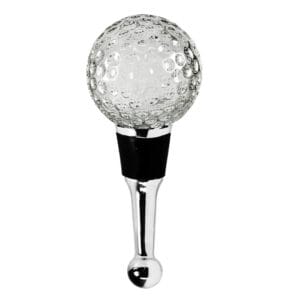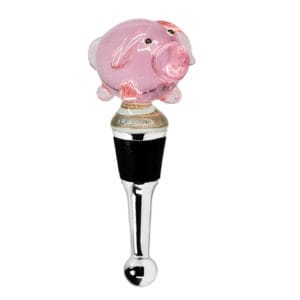For a successful wine tasting you need at least 3 to 5 different wines This number offers enough variety to explore different flavors without overwhelming your taste buds. For beginners, 3-4 wines are ideal, while experienced tasters can comfortably evaluate 5-7 wines. The exact number depends on the duration of your tasting, the experience level of the participants, and the purpose of the event.
What is the ideal number of wines for a wine tasting?
The ideal number of wines for a wine tasting is between 4 and 6 winesThis amount offers the perfect balance between variety and maintaining a clear flavor palette. For a tasting of about two hours, this is the optimal amount to give each wine the attention it deserves.
Different types of tastings have specific guidelines. An informal tasting with friends works well with 4-5 wines, allowing about 20-30 minutes per wine. This gives everyone time to taste, discuss, and enjoy without feeling rushed.
Professional tastings or educational sessions can include up to 6-7 wines. It's important to maintain a clear structure and allow sufficient time between wines. An experienced sommelier can guide the group through the tasting process, allowing even less experienced participants to keep up.
For beginners, we recommend starting with 3-4 wines. This number is manageable and prevents new wine lovers from becoming overwhelmed. For example, you could start with a light white wine, followed by a full-bodied white, a light red, and finish with a robust red wine.
How many different wines can you taste without palate fatigue?
Most people can Effectively taste 5 to 8 wines before taste fatigue sets in. After this amount of time, your taste buds begin to become less sensitive to subtle differences between wines. Professional tasters can sometimes judge more wines, but even they experience noticeable fatigue after 10-12 wines.
Palate fatigue, also known as palate fatigue, occurs when your taste buds become saturated from continuous exposure to complex flavors. This phenomenon is exacerbated by alcohol, tannins, and the intensity of the wines you taste.
Several factors influence when taste fatigue occurs. The order in which you taste plays a crucial role – heavy, tannic wines cause fatigue more quickly than light, crisp wines. The temperature of the wines, the amount you taste at a time, and whether you neutralize them with water or bread between tastings also make a difference.
To prevent palate fatigue, take regular breaks between wines. Rinse your mouth with water, eat a piece of bland bread or crackers, and give your senses a break. These simple measures will help you enjoy tasting longer and more effectively.
Which wine pairing works best for a tasting?
The best pairing for a wine tasting follows the principle of building intensityStart with light, crisp wines and work towards fuller, more complex ones. Start with sparkling wines, move on to light white wines, full-bodied white wines, light red wines, and finish with powerful red wines.
A classic tasting order for Dutch wines might look like this: start with a sparkling wine made from the Johanniter grape, followed by a crisp Solaris, a oak-aged Auxerrois, a light Pinot Noir, and finish with a robust Regent. This order respects the natural progression from light to full-bodied and from dry to eventually sweet.
Variety in grape varieties makes a tasting more interesting and educational. Choose wines from different grape varieties to discover the unique characteristics of each. Dutch vineyards now offer a surprising diversity of grapes, from well-known international varieties to modern hybrids developed specifically for our climate.
Balancing different wine styles keeps the tasting experience interesting. For example, alternate a fruity wine with an earthier, mineral wine. Or pair a crisp, acidic wine with a rounder, fuller-bodied one. These contrasts help keep your taste buds alert and make the experience more dynamic.
How many milliliters of wine do you pour per tasting?
For a wine tasting you pour 60 to 90 milliliters per wine per person. This is sufficient to properly assess the wine's color, aroma, and flavor, without the total alcohol intake becoming too high. For professional tastings, 60ml is often recommended, while informal tastings can range from 75-90ml.
When calculating the total amount of wine, allow for approximately half a bottle (375ml) per person for a complete tasting of 5-6 wines. This takes into account that not everyone will finish every glass, and some wines may require additional pours.
So, for a group of 8 with 5 wines, you'll need at least 5 bottles, but it's wise to have 6-7 bottles available. This gives you time for enthusiasts who want a second taste of their favorite wine, without running out.
The difference between professional and informal tastings lies primarily in the discipline of spitting out wine versus continuing to drink. At professional tastings, participants are expected to spit out wine to remain clear, while at social home tastings, the wine is usually drunk. Adjust your pour volume accordingly – when spitting out wine, you can pour more generously.
What are the costs of a wine tasting with Dutch wines?
A wine tasting with Dutch quality wines costs on average between 15 and 35 euros per person For the wines alone. This is based on 5-6 good-quality wines, with bottle prices ranging from €10 to €20. For a complete experience, including appetizers and accompaniment, the cost is between €39 and €85 per person.
Dutch wines offer excellent value for tastings. Transport costs are minimal, and you'll be supporting local winemakers. Moreover, Dutch wines are often surprising and unique, making your tasting even more memorable. Most quality Dutch wines cost between €12 and €25 per bottle, making them ideal for tastings.
You can save money without compromising on quality by purchasing wisely. Buy directly from the winery or look for wines from emerging Dutch wineries that don't yet have the recognition (and awards) of established names. Organizing a tasting at home instead of an in-house event also saves considerably on costs.
The added value of local wines to the experience goes beyond just the taste. The story behind Dutch wines—the fight against climate change, the innovative grape varieties, the passion of the winemakers—adds an extra dimension to your tasting. Guests appreciate the local aspect and the sustainable nature of this selection. At Design & Wijn in Amsterdam, you can enjoy professionally guided tastings of carefully selected Dutch wines, with an emphasis on quality and the unique story behind each bottle.



